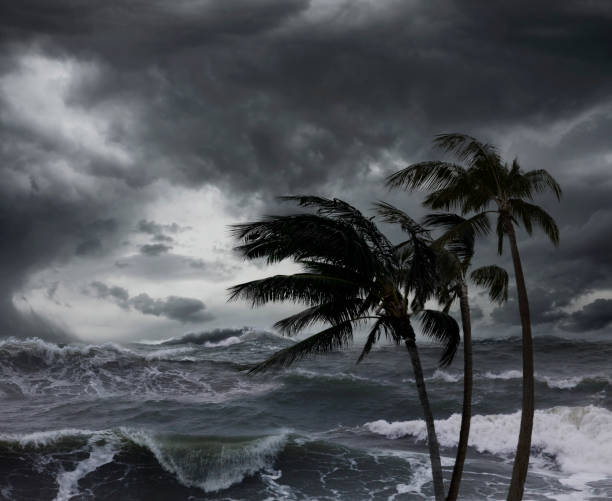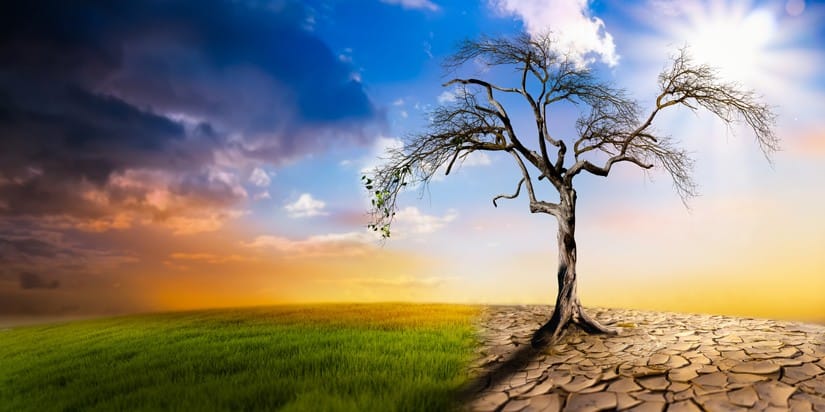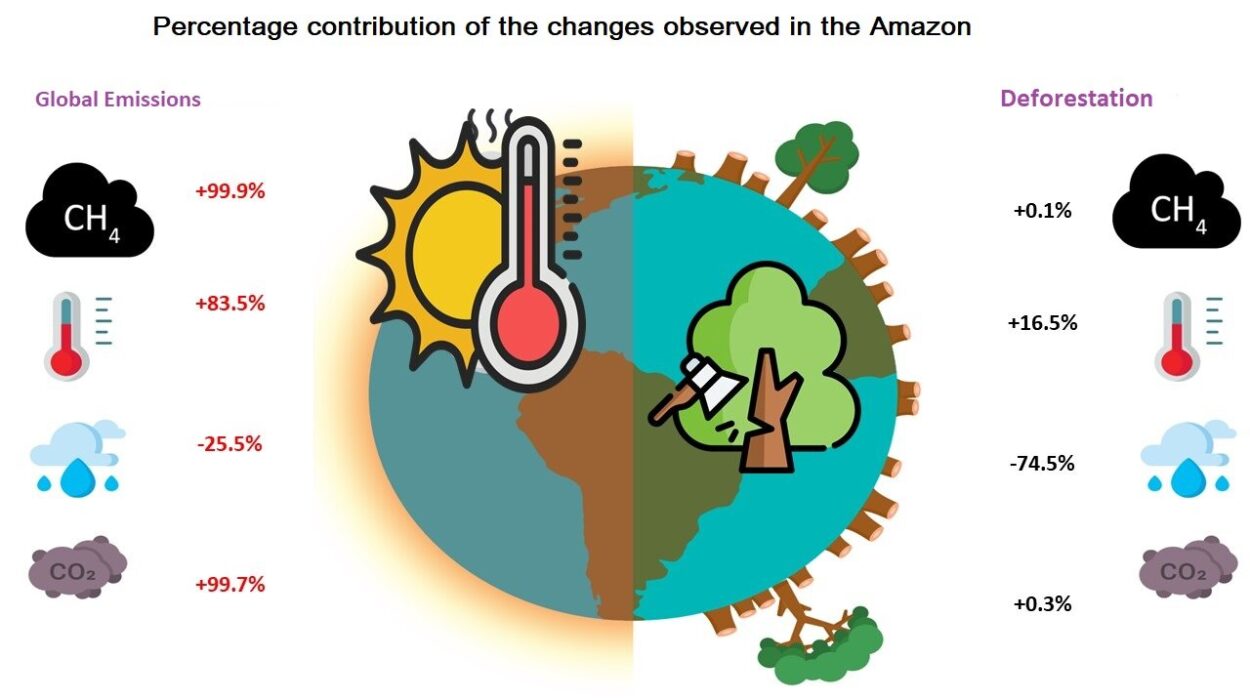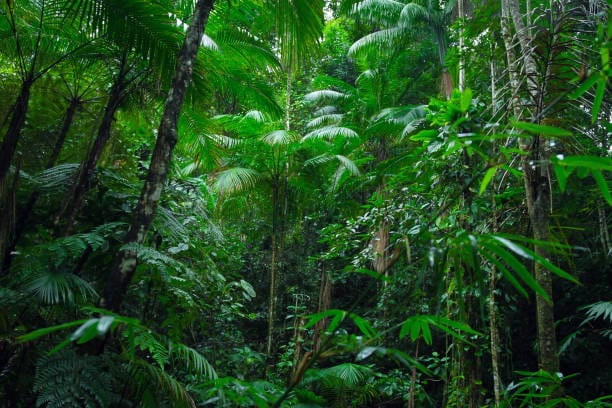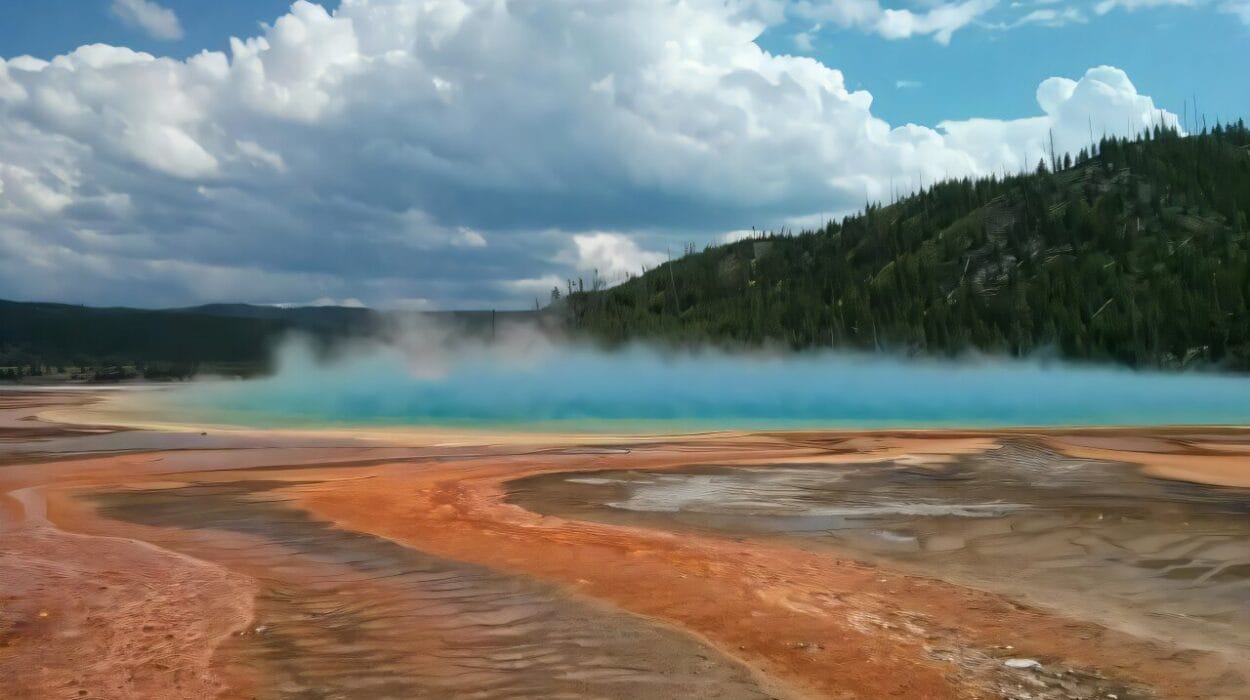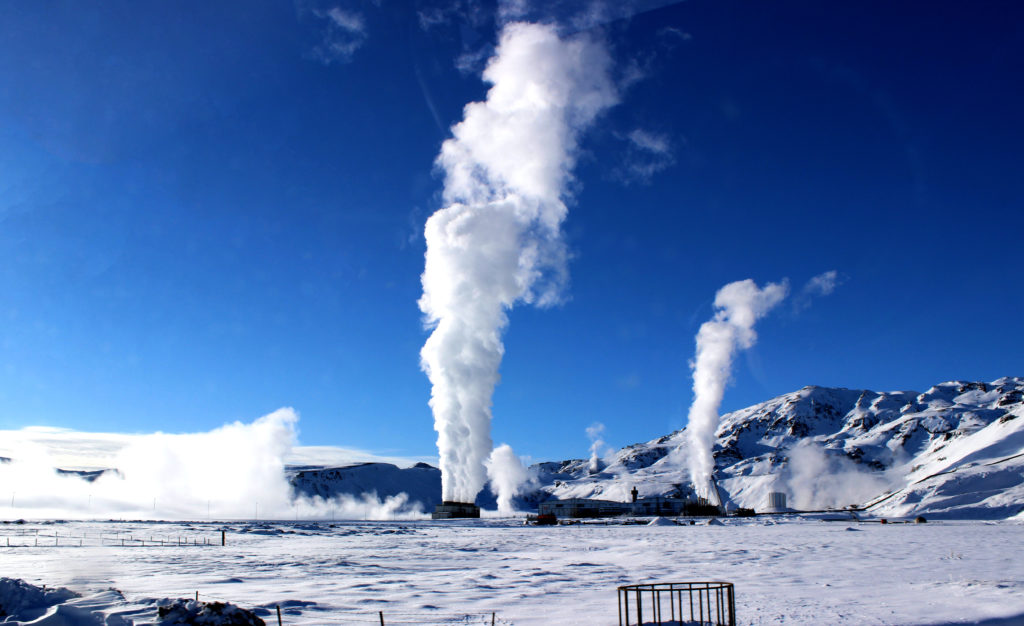In the warm, tropical waters of the world’s oceans, a silent force begins to stir. It starts with a whisper—just a gentle swirl of air, an innocent gathering of clouds, and a rising column of moist, sun-heated air. The sea glistens beneath the sunlight, its surface warm as bathwater. But this warmth is not idle. It’s a brewing energy, a ticking clock.
At first glance, there’s nothing alarming. A few thunderstorms cluster over the ocean’s surface, pulled together by the subtle dance of winds and heat. But hidden in these clouds is the seed of one of nature’s most powerful and destructive forces—the hurricane. Before long, what began as a soft breath of wind will grow teeth, roar with fury, and devour everything in its path.
This transformation—from warm ocean water to a swirling monster with winds that can exceed 150 miles per hour—is one of the most dramatic phenomena on Earth. To understand how hurricanes form and why they are so devastating, we must journey deep into the heart of the atmosphere, peer beneath the waves, and explore the complex and delicate balance of nature’s fury.
The Ocean’s Furnace: Fuel for a Storm
Every hurricane begins with heat. Not just any heat—but the moist, rising heat that comes from warm tropical oceans. Water temperatures need to reach at least 26.5°C (about 80°F) down to a depth of at least 50 meters for a hurricane to form. This is no trivial condition; it’s like the sea has to store enough thermal energy to feed a growing beast.
When the sun heats the surface of the ocean, it causes water to evaporate, sending moisture-rich air upward into the atmosphere. This rising air cools and condenses into clouds and rain, releasing latent heat—a hidden energy that turbocharges the process. That heat warms the air further, making it lighter and causing it to rise faster. The faster it rises, the more air rushes in from below to take its place. This feedback loop builds a towering column of spinning storms.
But even this isn’t enough to create a hurricane. The Earth’s rotation plays a critical role through what’s known as the Coriolis effect. Because the Earth spins on its axis, any mass moving across its surface—like air—gets deflected. In the Northern Hemisphere, that deflection is to the right; in the Southern Hemisphere, it’s to the left. This twist is what gives hurricanes their signature spiral shape.
As the rotation strengthens, a central low-pressure area develops—a calm, eerily quiet zone we call the eye of the hurricane. Surrounding this eye, fierce winds rage in the eyewall, where the storm’s most violent forces reside. Now, the hurricane is alive. It’s no longer a mere disturbance. It’s a machine of wind and water, powered by heat, structured by pressure, and guided by invisible forces in the sky.
Names in the Wind: A Storm by Many Titles
Around the world, hurricanes go by many names. In the Atlantic and Northeast Pacific, they’re called hurricanes. In the Northwest Pacific, they’re known as typhoons. In the South Pacific and Indian Ocean, they’re called cyclones. Though the names differ, the mechanics are identical—a violent, rotating storm system born over warm ocean waters.
Each year, dozens of these storms form across the globe, but only a fraction become the deadly, news-making juggernauts we hear about. Meteorologists track these storms closely, naming them alphabetically once they become organized enough to threaten land. The naming, while systematic, serves a deeper purpose—it humanizes the inhuman, giving us a way to speak of destruction with familiarity.
The Stages of a Monster’s Life
The life of a hurricane unfolds in stages, from birth to dissipation, and each phase carries its own danger and intrigue. It begins as a tropical disturbance—a cluster of clouds and thunderstorms with minimal organization. If conditions are right—enough moisture, heat, and minimal wind shear (which can tear storms apart)—the disturbance can strengthen into a tropical depression.
A tropical depression features a defined low-pressure center and wind speeds of up to 38 mph. It’s like a heartbeat forming. If it intensifies, it becomes a tropical storm, with winds between 39 and 73 mph. At this stage, it receives a name, and forecasters begin issuing alerts.
Once the storm’s winds exceed 74 mph, it earns the title of hurricane. But not all hurricanes are equal. Meteorologists classify them using the Saffir-Simpson Hurricane Wind Scale, from Category 1 (weakest) to Category 5 (strongest). A Category 5 hurricane is a behemoth, with sustained winds over 157 mph—strong enough to shatter homes, uproot trees, and leave entire regions unrecognizable.
But wind speed is only part of the story.
The Eye of the Storm: A Paradox of Peace and Fury
One of the most haunting features of a hurricane is its eye. Roughly 20 to 40 miles in diameter, the eye is an area of relative calm and clear skies. Standing in the eye of a hurricane is an eerie experience. After hours of punishing winds and blinding rain, the sky opens up. The wind stops. Birds may fly. It feels like the storm is over.
But it’s not.
The eye is surrounded by the eyewall—the ring of towering thunderstorms that contain the hurricane’s most intense winds and rainfall. If you’re in the eye, that means you’ve passed through one side of the eyewall, and the other side is still to come. As the storm moves, the other side hits—often with even greater force, because the winds there can blow in the opposite direction.
This dual punch is why hurricanes can be so deceptive. A break in the storm can lull people into false security, only for the other side to strike moments later with devastating power.
The Destruction They Leave Behind
Why are hurricanes so destructive? It’s not just the wind. Hurricanes attack on multiple fronts—wind, rain, storm surge, and flooding—all at once.
Winds can tear roofs off buildings, snap power lines, and send debris flying like missiles. But wind damage is often just the beginning. The storm surge—an abnormal rise in sea level caused by the storm’s winds pushing water toward the coast—is often the deadliest aspect. It can flood entire communities in minutes, sweeping away homes, cars, and people.
Rainfall adds another layer of danger. Some hurricanes move slowly, dumping feet of water over the same area for days. Rivers overflow, dams strain, and landslides begin. In urban areas, the flooding can be catastrophic, particularly if storm drains are overwhelmed or the land is already saturated.
Even after the storm passes, the destruction lingers. Infrastructure is crippled. Clean water becomes scarce. Disease can spread. Recovery may take weeks, months, or even years.
Hurricanes are not just meteorological events—they are humanitarian disasters, economic crises, and psychological traumas. They scar both land and memory.
Historical Titans: Hurricanes That Changed the World
Certain hurricanes have become part of our collective history—symbols of nature’s raw power and reminders of our vulnerability.
The 1900 Galveston Hurricane remains the deadliest natural disaster in U.S. history, killing an estimated 8,000 people. In 2005, Hurricane Katrina struck New Orleans, breaching levees and leaving the city submerged. Over 1,800 lives were lost, and the storm’s aftermath exposed deep social and political fractures.
In 2017, Hurricane Maria devastated Puerto Rico, knocking out power for months and causing nearly 3,000 deaths. That same year, Hurricane Harvey poured more than 60 inches of rain over parts of Texas, flooding neighborhoods and forcing thousands to evacuate.
Each of these storms changed more than just geography—they altered policies, economies, and lives.
Climate Change: A New Era of Superstorms
As the Earth warms, hurricanes are entering uncharted territory. Scientists warn that while the number of hurricanes may not increase dramatically, their intensity and destructiveness are likely to grow.
Warmer ocean temperatures mean more fuel for hurricanes. Already, storms are forming earlier and lasting longer. Sea level rise makes storm surges more dangerous. Shifting wind patterns could alter where storms go, potentially threatening areas previously considered safe.
Recent years have seen an alarming trend: rapid intensification. This is when a storm strengthens dramatically in just 24 hours—like Hurricane Michael in 2018, which jumped from Category 1 to Category 5 overnight. These rapidly strengthening storms give people less time to prepare and evacuate, increasing the risk to human life.
In a changing climate, hurricanes are becoming not just stronger, but more unpredictable.
Forecasting and Preparation: Our Best Defense
Despite their destructive power, hurricanes do not strike without warning. Thanks to advancements in meteorology, satellite imaging, and computer modeling, we now have days—sometimes a week—of warning before a storm hits.
The National Hurricane Center and other global agencies track storms with remarkable precision. They issue forecasts for a storm’s path, strength, and potential hazards. Evacuation orders, emergency declarations, and public safety campaigns save countless lives every year.
Still, forecasting is not perfect. Storms can wobble unexpectedly. Rainfall amounts can be hard to predict. The public’s willingness to heed warnings varies, and infrastructure in vulnerable areas is often inadequate.
Preparedness remains our most powerful weapon. Strong building codes, emergency response plans, and public education can reduce the toll hurricanes take. But there is no silver bullet. When the sea and sky conspire, even the best preparation can be tested.
The Psychology of Storms: Living with the Unpredictable
There is a unique fear that hurricanes evoke. Unlike earthquakes or tornadoes, they arrive slowly—days of dread and anticipation before the blow. People board up windows, flee inland, and wait. For some, it’s a ritual; for others, it’s a trauma.
The psychological toll is profound. Evacuation can be chaotic, and returning to ruined homes is emotionally devastating. Many survivors suffer from PTSD, anxiety, and depression long after the winds have died.
Yet, communities also show incredible resilience. Neighbors help neighbors. Strangers offer aid. Rebuilding begins. Storms test our humanity—and often reveal its strength.
Nature’s Paradox: Beauty and Destruction
It’s easy to see hurricanes only as monsters, but there is also something awe-inspiring about their structure. Satellite images show them as perfect spirals, vast and symmetrical, stretching hundreds of miles. Inside, physics and chaos blend into elegance.
They are reminders of nature’s complexity—of the balance between creation and destruction. Hurricanes play a role in redistributing heat around the planet. They stir oceans, refresh rainforests, and regulate climate patterns.
But in a warming world, their balance may be tipping.
Looking to the Future: Adapting to a Stormier World
As humanity faces the future, the question is not whether hurricanes will continue—but how we will adapt. Resilience must be woven into our cities, our policies, and our consciousness. This means smarter infrastructure, greener energy, and global cooperation on climate action.
It also means remembering the human face of every storm. Behind each data point is a family, a home, a memory. Understanding how hurricanes form—and why they’re so destructive—is not just a scientific endeavor. It’s a moral one.
We must prepare not only to survive these storms, but to reduce their wrath and heal after they pass.
